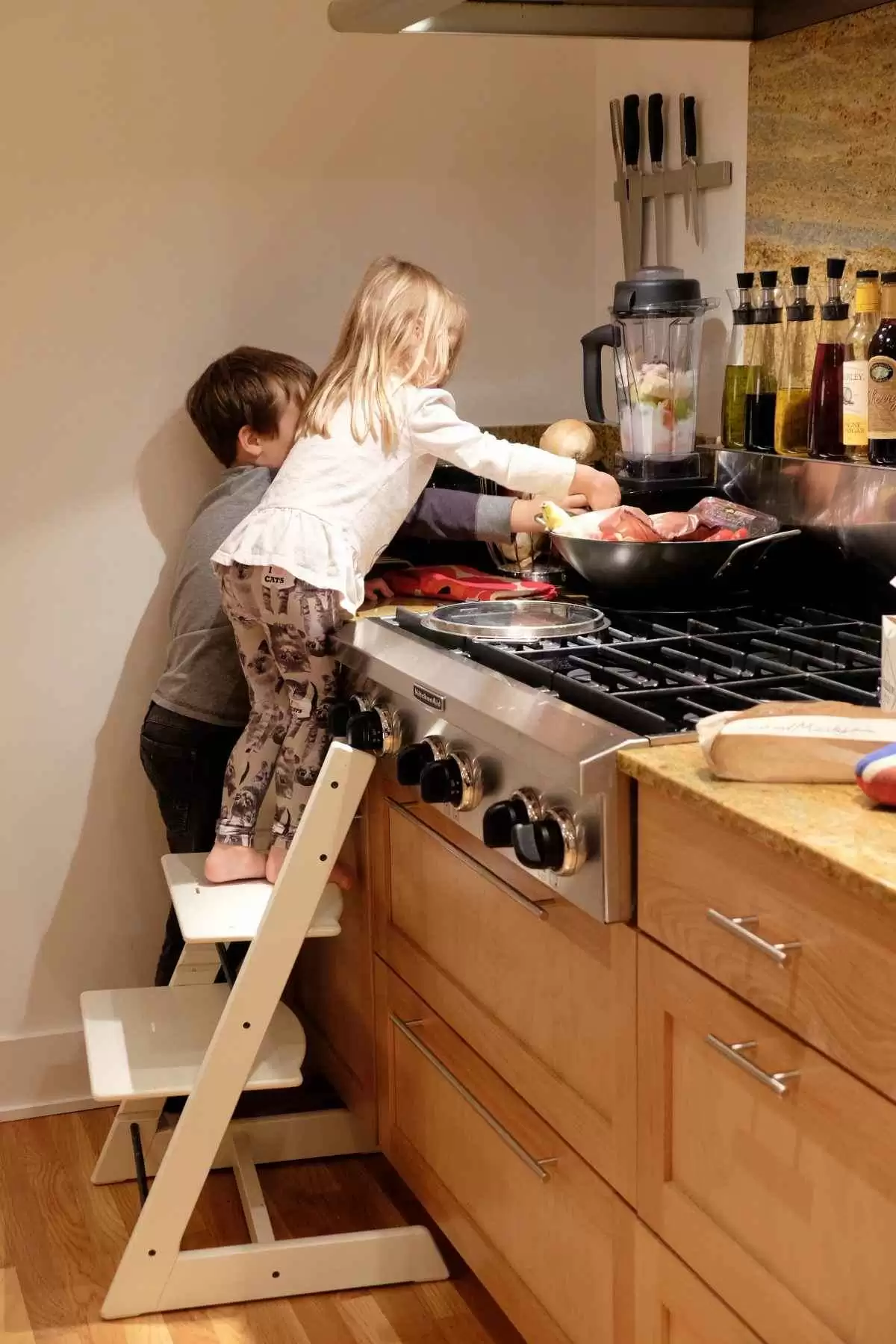
Celiac.com 07/26/2025 - Going gluten-free isn’t just a matter of swapping out bread and pasta—it’s a full-on lifestyle adjustment. For those with celiac disease or gluten sensitivity, even trace amounts of gluten can trigger serious symptoms. And while eating out often gets the blame for cross-contact, the kitchen at home can be just as sneaky.
If you’ve ever had a reaction and thought, “But I only ate food from my own kitchen,” you’re not alone. Gluten hides in corners, lurks in crumbs, and disguises itself in sauces, tools, and even air particles. It’s time to grab your metaphorical magnifying glass and become a gluten-free detective in your own home. Let’s investigate!
The Case of the Crumb-Filled Countertops
Celiac.com Sponsor (A12):
Your first suspect? The very surface where meals are prepped. Counters are often wiped quickly between tasks, but even the tiniest leftover crumbs from a slice of regular bread can contaminate a gluten-free sandwich.
Investigative Action:
- Use dedicated cloths or paper towels for cleaning gluten-free prep areas.
- Consider investing in a separate cutting board and prep station for gluten-free cooking.
- Clean all surfaces with hot, soapy water before preparing gluten-free food, even if they look clean.
Why This Matters:
Cross-contact from countertops is one of the most common sources of accidental gluten exposure. Celiac disease isn’t about quantity—a single breadcrumb can cause an immune reaction.
The Mystery of the Mixed-Up Utensils
That shared toaster? A prime suspect. Wooden spoons, scratched plastic spatulas, or the same knife used to cut both regular and gluten-free bread can harbor lingering gluten.
Investigative Action:
- Retire your old toaster or keep two clearly labeled ones (or use toaster bags).
- Use color-coded or labeled utensils, pans, and tools that are only for gluten-free use.
- Be cautious with wooden or plastic tools—these can absorb gluten. Stainless steel or silicone are easier to clean thoroughly.
Why This Matters:
Even tiny bits of gluten lodged in a pan’s scratches or a crumb in the toaster slot can contaminate safe food. Utensils that go unnoticed often lead to unexplainable symptoms.
The Enigma of the Pantry Imposters
Gluten doesn’t just live in bread and pasta. It can hide in flour bags, spice jars, sauces, and even bulk bins. If gluten-containing and gluten-free foods are stored side-by-side, it’s easy for particles to migrate—or for the wrong scoop to land in the wrong container.
Investigative Action:
- Store gluten-free items on the top shelves to avoid falling contamination.
- Use separate containers and scoops for shared staples like sugar, salt, or oats.
- Label everything clearly and consider creating a gluten-free zone in your pantry.
- Double-check spices, seasonings, and sauces for hidden gluten or cross-contamination risk.
Why This Matters:
Flour particles can float in the air for hours, and shared containers can cause gluten-free items to become contaminated without anyone realizing it.
The Secret Life of Sponges and Towels
A sponge that cleaned up spilled soy sauce (containing wheat) might seem innocent after a rinse—but it can be a silent saboteur. Dish towels used to dry dishes or hands after handling gluten can transfer particles without a trace.
Investigative Action:
- Use separate sponges and cloths for gluten-free prep areas.
- Regularly sanitize cleaning supplies or switch to disposable ones when necessary.
- Train household members to avoid using shared towels after prepping gluten meals.
Why This Matters:
Many people overlook cleaning tools as a risk, but they often carry more gluten residue than utensils or surfaces. They’re the unassuming accomplices in many kitchen contamination crimes.
The Case Files of Cookware and Appliances
That old cast iron pan with years of baked-on seasoning? Or that baking stone that’s absorbed gluten over the years? These are common culprits. Even appliances like stand mixers or blenders can harbor gluten particles.
Investigative Action:
- Dedicate cookware like pans, baking sheets, and muffin tins exclusively to gluten-free cooking.
- Scrutinize shared appliances for cracks, crevices, and hard-to-clean parts.
- When in doubt, buy a second set of small appliances for gluten-free use.
Why This Matters:
Some surfaces are nearly impossible to clean thoroughly once they’ve been exposed to gluten. For someone with celiac disease, this risk is not worth ignoring.
The Hidden Ingredient Interrogation
Sometimes, it’s not the equipment or the surfaces—it’s the ingredient label. “Modified food starch,” “natural flavors,” or “seasoning mix” can all sound innocent but sometimes hide gluten.
Investigative Action:
- Get familiar with safe ingredient lists and risky additives.
- Contact manufacturers if there’s any doubt.
- Prefer brands that clearly label gluten-free status, especially for processed or packaged goods.
Why This Matters:
Even if your kitchen is spotless, using a hidden-gluten ingredient can undo all your hard work. Vigilance is key to avoiding reactions.
The Case of the Confused Roommates (or Kids, or Spouses)
You’ve built a perfect gluten-free system—only for someone else in the house to unknowingly spread breadcrumbs around. Shared homes require shared understanding.
Investigative Action:
- Educate everyone in the household about what gluten-free really means.
- Post signs, labels, or checklists in the kitchen.
- Consider holding a “kitchen safety training” with your family to reinforce why your precautions matter.
Why This Matters:
It’s not about being controlling—it’s about protecting your health. When others understand the risks, they’re more likely to respect boundaries.
The Gluten-Free Detective’s Toolkit
To set up a safe gluten-free kitchen, you need the right tools. Here’s your essential detective kit:
- Color-coded or labeled utensils and cutting boards
- A dedicated gluten-free toaster
- Airtight containers for gluten-free staples
- Separate sponges and dishcloths
- A magnifying glass (metaphorically!) for label reading
- A journal to track symptoms and suspected exposures
Bonus: Make your own gluten-free “evidence board” on the fridge with reminders, safe brands, and red flags to watch for.
Final Report: Solving the Mystery of Gluten Exposure
Becoming a gluten-free detective may feel overwhelming at first, but it's also empowering. When you investigate your kitchen and uncover potential sources of contamination, you're reclaiming control over your health.
For people with celiac disease or gluten sensitivity, this isn’t just about convenience—it’s about survival, safety, and peace of mind. A reaction might not always be immediate, but the long-term effects of repeated exposure can be serious.
By being thorough, proactive, and informed, you can transform your kitchen from a crime scene into a gluten-free sanctuary.
The Verdict
In the end, a safe kitchen isn’t just about what you cook—it’s about how, where, and with what tools you cook it. Whether you’re newly diagnosed or a seasoned gluten-free veteran, it pays to put on your detective hat from time to time.
No detail is too small. No question is too picky. When it comes to celiac safety, your health is worth the investigation. So trust your gut—literally—and keep asking: could this be the culprit?
Happy sleuthing, gluten-free detective. Your kitchen is now under investigation—and soon, under your full control.












Recommended Comments
Create an account or sign in to comment
You need to be a member in order to leave a comment
Create an account
Sign up for a new account in our community. It's easy!
Register a new accountSign in
Already have an account? Sign in here.
Sign In Now